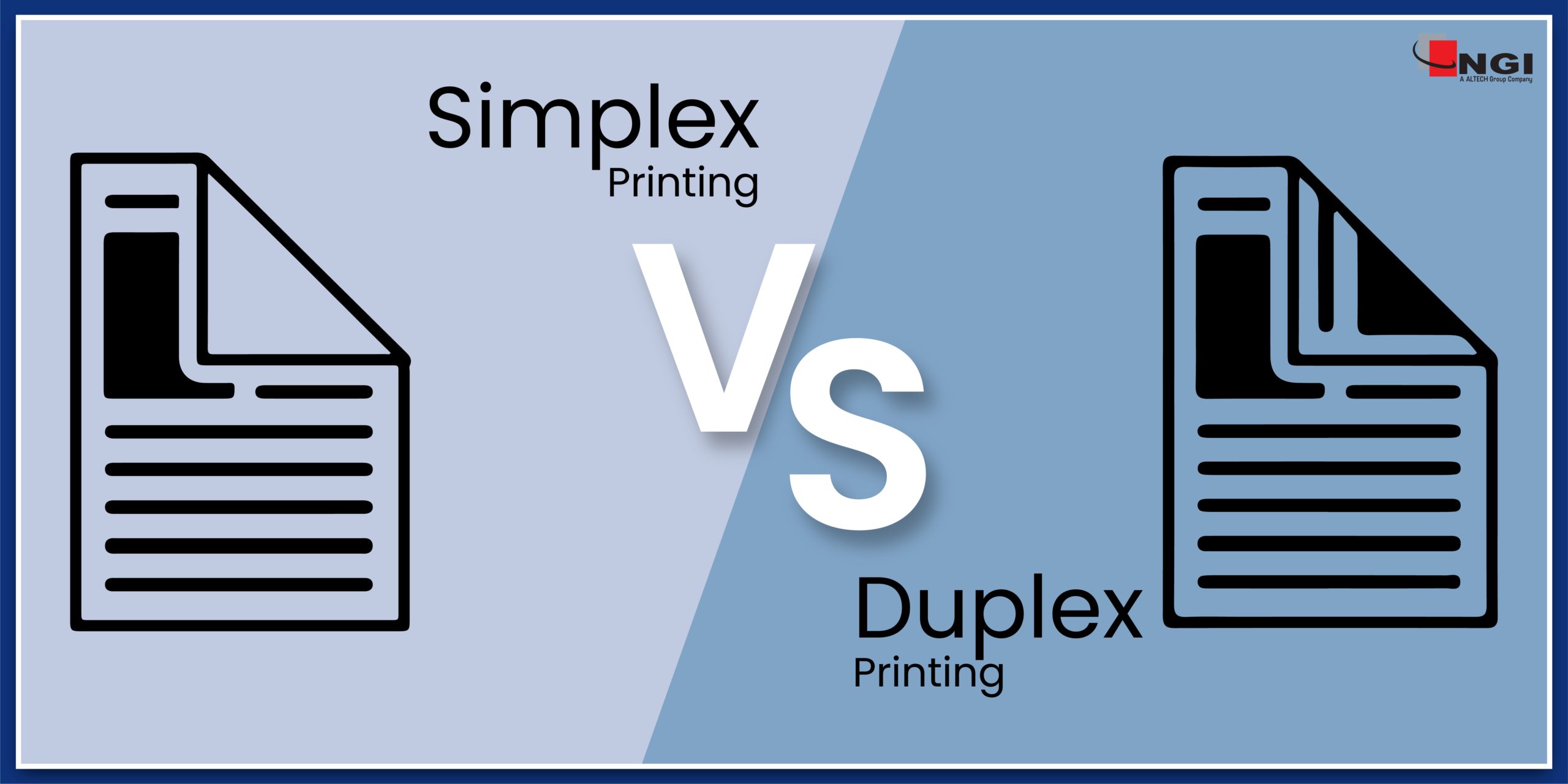
In the ever-evolving landscape of printing technology, the choice between simplex and duplex printing plays a pivotal role in determining efficiency and resource utilization. Understanding these terms and their implications can empower businesses and individuals to make informed decisions regarding their printing needs. In this article, we will delve into the definitions of simplex and duplex printing, explore their advantages and disadvantages, and shed light on manual and auto duplex printing, as well as the innovative dual duplex engine.
Definitions
Simplex Printing:
Simplex printing, also known as one-sided printing, refers to the process of printing on only one side of a sheet of paper. It is the conventional and most straightforward printing method, suitable for various applications, such as posters and charts, where double-sided printing is not needed.
Duplex Printing
In contrast, duplex printing involves printing on both sides of a sheet of paper. This method significantly reduces paper consumption, making it an eco-friendly option. Duplex printing is ideal for producing professional documents, brochures, and presentations while minimizing environmental impact.
Pros and Cons
Pros of Simplex Printing:
- Low Initial Cost: Printers that support simplex printing are less complex and more affordable than their duplex counterparts. This can be advantageous for users with budget constraints or those who prioritize simplicity in their printing needs.
- Faster Printing Speed: Simplex printing tends to be faster than duplex printing since it involves printing on one side of the paper without the need to flip or refeed the sheets.
- Low Potential for Jam: Simplex printing doesn’t require the additional process of flipping and refeeding sheets. This simplicity reduces the potential for paper jams, making simplex printing a more reliable and hassle-free option, especially when dealing with a variety of paper types and sizes.
Cons of Simplex Printing:
- Environmental Impact and Paper Consumption: Simplex printing, which utilizes only one side of the paper, has a larger environmental impact due to increased paper consumption. This not only contributes to deforestation but also leads to higher energy consumption in paper production.
- Cost Considerations: Printing on one side of the paper may increase printing costs over time, especially for large-volume printing tasks. Duplex printing, although initially more expensive in terms of equipment, can save money in the long run by reducing paper usage.
- Storage Space: Documents printed on one side often take up more physical storage space than those printed on both sides. This can be a concern in offices or organizations with limited storage capacity.
Pros of Duplex Printing:
- Cost Reduction: Opting for duplex printing results in decreased paper consumption, leading to fewer instances of supply replenishment. This reduction in paper usage means that you’ll spend less on paper, contributing to overall cost savings.
- Increased Office Efficiency: With duplex printing, print jobs require fewer pages, translating to less physical space needed for filing. This efficiency allows you to optimize your office organization by freeing up valuable filing space.
- Energy Conservation: Embracing double-sided printing is not only environmentally friendly but also energy-efficient. Compared to standard printing, duplex printing consumes less energy, contributing to a more sustainable and cost-effective printing process.
Cons of Duplex Printing
- Slower Printing Speed: Printing on both sides of the paper takes more time compared to single-sided printing. This is because the printer has to flip the paper and print on the second side, which adds extra processing time.
- Potential for Paper Jams: Duplex printing may increase the likelihood of paper jams, especially if the paper is not properly aligned or if it is of low quality. The additional complexity of printing on both sides can contribute to mechanical issues.
- Potential for Misalignment: Duplex printing may lead to misalignment issues, where the content on one side of the page does not perfectly align with the content on the other side. This can be more noticeable with some printers and paper types.
FAQs
What is the difference between Auto Duplex and Manual Duplex?
Duplex printing encompasses both manual and auto modes. In manual duplex printing, users manually flip and reinsert the paper to print on the second side, making it suitable for printers without automated duplexing capabilities. On the other hand, auto duplex printing, featured in many modern printers, automates the process by printing on both sides in a single pass, minimizing user intervention and streamlining the overall printing experience.
What is a double-engine duplexer and do all Auto Duplex printers have them?
No, not all auto duplex printers double-engine duplexers. Auto duplex printing refers to the capability of a printer to automatically print on both sides of a sheet of paper without manual intervention. The term “double-engine duplexer” specifically refers to printers equipped with two engines that can simultaneously print on both sides of the media, further enhancing printing efficiency. While some auto duplex printers may have a single engine that flips the paper internally to print on both sides, not all of them feature two duplex engines.
Is Duplex better than Simplex printing?
The discussion surrounding simplex and duplex printing is nuanced, with each approach presenting distinct advantages and drawbacks. However, in a corporate environment, the decision between simplex and duplex printing is guided by some crucial factors:
- Paper Usage and Sustainability: Duplex printing is environmentally favorable, reducing paper consumption and aligning with sustainability goals by utilizing both sides efficiently.
- Printing Volume: For occasional tasks, simplex may suffice; however, duplex printing is highly efficient for high-volume corporate printing needs.
- Document Type: Simplex may be preferred for visually sensitive materials like photos or presentations where double-sided printing might be undesirable.
- Printer Capabilities: Ensure your office printer supports duplex printing and is compatible with the intended paper type.
In conclusion, the optimal printing mode in a corporate context is a nuanced decision that depends on the interplay of these factors. By carefully assessing your organization’s priorities and considering the specific demands of each printing task, you can strike a balance between efficiency, cost-effectiveness, and environmental responsibility.
Now that you’re armed with the knowledge of simplex vs. duplex printing, take action! Visit our Product page, to explore our comprehensive range of Fujifilm printers.
Or are you still unsure? Our expert team at NGI Gulf is here to help! Contact us for a free consultation and let us guide you toward the ideal printing solution, for your office.


